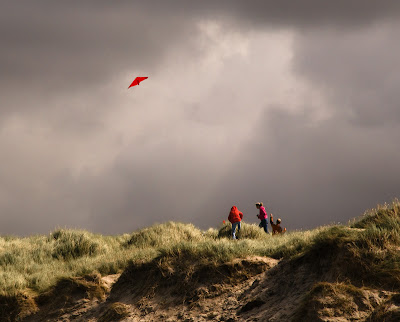With a few of my previous images I have used the Adobe Camera RAW (ACR) “Clarity” settings to improve the focus (clarity) of the subject and in corollary reduce the detail in the background, which is very similar to using a higher F-stop or shallow DOF.
When experimenting with digital editing techniques, sometimes you realize that you have a new tool of choice that is better than some other method you are using. But with all good things there are limitations and images that are better suited for this technique.
Occasionally, I did use Photoshop blur filter, normally with small settings but I was not fond of the overall effect it created when larger settings (above 10) were used. It is a bit hard to describe but it seems too unnatural even when adding some noise back in.
To demonstrate the effects that can be achieved, I select 2 images to compare using just the blur tool and the blur tool with clarity set at full reduction of –100.
Using the clarity tool is not a one-button-solution as you will need to use layers and a mask to separate the subject from the blurred background. To really see the comparison, click on any of the thumbnail images below, as the originals are 2400 pixels wide.
Just using the maximum clarity setting has softened the background by removing contrast, which has the effect of leveling or washing out the colours and tones. Better, but still too much detail that is competing for attention with the colours and details of the bird.
The 3rd pane is just using gaussian blur at a setting of 16. Details softened but the contrast in green tones still competes with the bird.
In the 4th pane, I used the same blur setting (16) but applied this to the layer that was set to minimum clarity (-100), which is the best of both effects. Background softened and no highlights jumping out.
I used the same settings as the first image but omitted just showing the clarity layer only.
With very fine detail not much improvement between versions
When using the clarity setting with or without the blur effect, you may need to adjust the colour saturation, with whole or individual colours, to fine tune to your taste. Certain areas that are now washed out may need to be increased in saturation or lightened or darkened to better match the focal area.
It’s not a perfect or do-all tool but it is something to further help with increasing clarity of subject. It works great in fog scenes such as in this article Winter Fog – Great Photography Weather , and when I used it to soften background with the portrait of the curly-haired kid In the Creativity Article and Candid Portraits .
I will be heading to Demark for almost a couple of weeks this coming weekend as one of my brothers is getting married in the Danish Queens church which is inside the castle.
This is where Crown Prince Frederik and his wife Mary live. Queen Margrethe II will be staying at the castle during this period with her guards.
My brother, whom had been given a medal by the Queen a few years ago for distinguished service, asked permission from the Queen to marry in her private church (Fredricksberg Slotkirke), which she granted.
There is no photography allowed inside the church.
This trip will change my SoFoBoMo plans as I will not be able to do the original theme but now, I might pursue a theme of Copenhagen Bicycles.
Other images

This was taken on the west coast of Denmark and while the sky was heavily overcast there were shafts of light shining through. Since it was taken with a telephoto lens, the kite was not visible within this tight frame, therefore added from another image.
Thanks to all those who have joined this blog lately and a special thanks to those who still come by on a regular basis.
When the readership finally reaches 1,000 members, highest so far has been 885, I will give away 2 singed prints to those readers (random selection) that indicate an interest.
So please continue reading the articles for a little while longer as I am hoping by late summer or early fall to reach that threshold. I don’t actively try to get more members but through our community, it seems to be slowly increasing.
It will most likely be 3-4 weeks before I am able to post again.
Lately, I have been busy trying to improve my oil painting skills and I feel I am now starting to see some improvement. I did this image from a photograph. Not mine but a book that is meant for you to practice. I used my own creativity to enhance the glow in the fields by changing from summer yellow to an orange to enhance vibrancy. Also, I changed the gray parts of clouds to purple-red to show reflections from those glowing fields. I
Niels Henriksen












